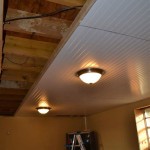Essential Aspects of Installing Drain Tile In Basement
Installing drain tile in your basement is a crucial step in protecting your home from water damage. Proper installation ensures that excess water is effectively drained away from your foundation, preventing seepage and potential structural issues. Here are the essential aspects to consider when installing drain tile in your basement:
1. Determine the Need for Drain Tile
Not all basements require drain tile. Assess your basement's condition and history of water issues. If you've experienced water seepage or dampness during heavy rainfalls or snowmelt, drain tile may be necessary.
2. Plan the Drain Tile System
Design the drain tile system based on your basement's size, configuration, and potential water sources. Plan the location and slope of the drain tile lines to ensure proper drainage.
3. Dig the Trenches
Excavate trenches around the perimeter of your basement or in specific areas where water accumulates. The trenches should be deep enough to accommodate the drain tile and gravel bed, typically 6-12 inches deep.
4. Lay the Gravel Bed
Spread a layer of clean gravel (3/4-inch or larger) into the trenches to provide a stable base for the drain tile and facilitate drainage.
5. Install the Drain Tile
Place the perforated drain tile in the gravel bed. Use 4-inch diameter drain tile for most residential basements. Connect the sections using couplers or connectors.
6. Slope the Drain Tile
Slope the drain tile toward a sump pit or drain outlet. The slope should be at least 1/4-inch per foot to ensure proper water flow.
7. Cover the Drain Tile
Cover the drain tile with more gravel to protect it from debris and soil erosion. A geotextile fabric can also be used to prevent dirt from clogging the tile.
8. Connect to a Sump Pit or Drain Outlet
Connect the drain tile system to a sump pit or drain outlet. The sump pit collects water from the drain tile and pumps it away from your basement. A drain outlet allows water to drain directly into a storm drain or ditch.
9. Backfill the Trenches
Backfill the trenches with excavated soil or clean gravel. Compact the soil to prevent settling and ensure proper drainage.
10. Inspect and Maintain Regularly
Inspect your drain tile system annually for any blockages or damage. Clean the drain tile and sump pit as needed to maintain proper drainage. If you notice any issues, contact a professional for repair or maintenance.
Installing drain tile in your basement requires careful planning and execution. By following these essential steps, you can effectively protect your home from water damage and create a dry and healthy living environment.

What Is Drain Tile Epp Foundation Repair

Top 5 Star Basement Interior Drain Tile System Solutions

Interior Drain Tiles Vs Exterior Choosing What S Best

Basement Drain Tile Installation In Your Home Beltsville Md Aquaguard Waterproofing

Top 5 Star Basement Interior Drain Tile System Solutions

Is Drain Tile A Solution For Your Basement Epp Foundation Repair

Drain Tile System Installation Drainage Culvert Pipe French Catch Basin Covers

Solve Water Issues By Installing Drain Tile In The Basement

Is Drain Tile A Solution For Your Basement Epp Foundation Repair

Why Interior Drain Tile For Basement Waterproofing
Related Posts







